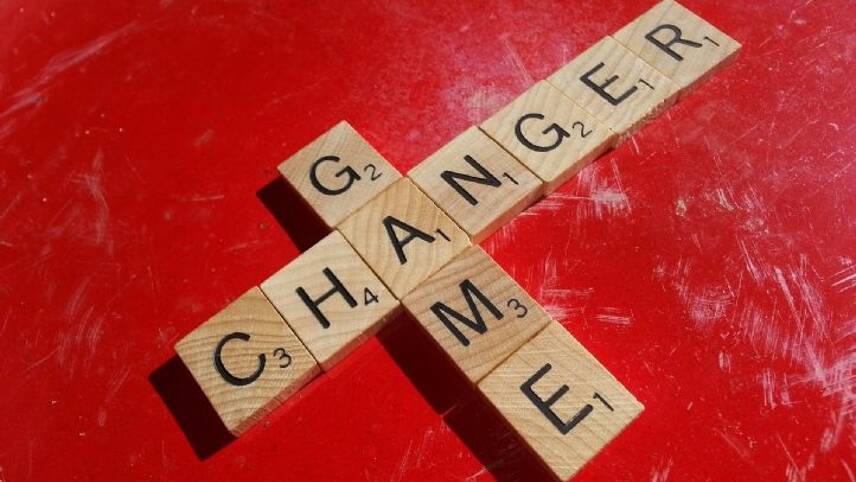Register for free and continue reading
Join our growing army of changemakers and get unlimited access to our premium content

At the turn of the Millennium, AG Lafley took over as the new CEO of the fast moving consumer goods giant Proctor and Gamble, inheriting a business suffering flagging sales, competing on price in increasingly commoditised categories. Rather than cutting jobs or returning to a core portfolio, what Lafley did next surprised many. To reinvigorate this ailing behemoth he set up a new design function to revolutionise the way P&G approached innovation. The process became more customer-centric, delivering a number of new, ‘game-changing’ products (a term he famously coined and wrote the book on), going on to spread design thinking far beyond the design team alone. By 2008 P&G sales had doubled from $40 to more than $80 billion aided significantly by the introduction of design.
I was reminded of what design can do as I participated this week in the World Business Council for Sustainable Development’s webinar ‘A Guide to the Circular Economy for Designers’. This made the case for considering circular economy strategies during the early design, research (R&D) or innovation phases of product and service development, something that I’ve been banging on about for ages. The WBCSD’s excellent Practitioners Guide that supports this is well worth a look. Its emphasis the design for sustainable business mirrors that of another heavyweight thought leader, the Ellen Macarthur Foundation (EMF), describing a circular economy as ‘regenerative by design’
Partnering with the EMF, I spotted that the worlds most famous design consultancy IDEO (P&G’s consultants on the above design program) had recently launched the Circular Design Guide; while the recent New Plastic Economy Innovation Challenge awarded a whopping $2M in prizes to solutions to the 30% of our mountainous plastic waste that needs tackling through design. It does feel like something of a sustainability groundswell towards design.
I’ll confess that I’m a bit biased on all this, as I trained as a designer many moons ago, but I also believe this is an important trend for ‘paddling sustainability upstream’. Whilst design has often felt shallow, full of stylists or fashionistas, obsessed with the latest cool new gadgets or how stuff looks, it has emerged as an important strategic business resource. It looks increasingly crucial to sustainability now too. The design phase is clearly a place where many important business decisions are made, where the main impacts of products, services and business models can be locked down.
Why ‘design’ for sustainability?
Despite this, it’s still not the norm to tackle sustainability through design, and companies that do this can often tackle it through technical, detailed design or tactical activities that merely ‘correct’ the products they offer today. This feels a world-away from the systemic, game-changing approach used by P&G, which truly uses design with a capital ‘D’. Though companies don’t look to design for sustainable growth today, a growing business case suggests that perhaps they should: some of the worlds most successful companies (nike, airbnb) are lead by designers or have representation on the board, while the UK Design Council research suggests that every £1 invested in design can reap £20 in turnover and £4 in profitability.
So like P&G, could design-led innovation be the key to you becoming a green game-changer, and how would you practically get started? Here are three tips to get going on sustainability through design:
01 Design is a multi-disciplinary sport
You might start with a design team or an external consultant, but a good design process requires many business functions to be involved, and shouldn’t just reside with designers. For example, the most influential function in many brand-led projects is often marketing so they end up leading much of the design work. I’ve also worked on food projects where much of the designing was done by a chef, and on personal care projects where an important designer was a chemist.
02 Design from the start
It sounds simple, but design is often added on at the end of the process, to make things look nice or user friendly. It works much better at the start to help shape the process and inform thinking early on. Making fundamental changes later will be costly and difficult to implement so it makes more sense to consider them at the front-end. Its surprising how few people tackle sustainability in design.
03 Design thinking can help humanise circular and sustainable innovations
The design innovation approach used by P&G puts people first. It is simply brilliant when customers or consumers are at the heart of your sustainable business challenge or when the main challenge is to humanise new technology or business models.
Turning to design has changed-the-game for many, and perhaps it can for you too. Managed properly, seeing sustainability as design challenges can usher in the next wave of sustainable growth.



Please login or Register to leave a comment.